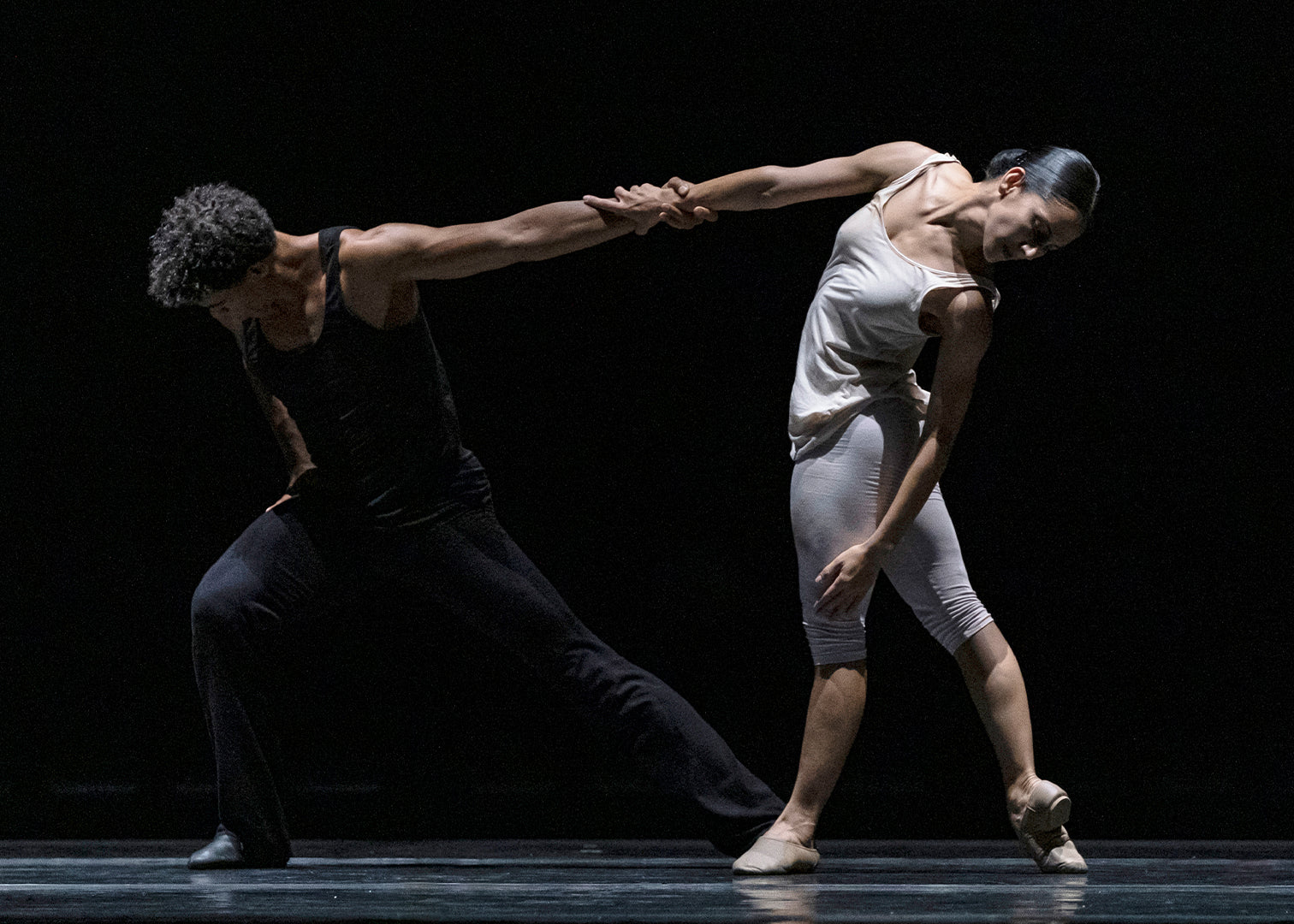With a double bill, however, that margin of error is lower, and if the two pieces on display differ enough in calibre, viewers are apt to end up resenting one for not being as strong as the other. Such is the issue I took with Sol León and Paul Lightfoot’s latest bill for Nederlands Dans Theater 1. For all its quirky enthusiasm, the programme suffers from an imbalance in both tone and quality, pitting one over-affected, desperately philosophical work (“Sehnsucht”) against a better-rounded and more inspired slice of absurdism (“Schmetterling”). That the evening ends on a high note rather than shooting its wad in the first half no doubt stands in its favour, though the fetching antics of the latter piece only partially offset the former's shortcomings.
“Sehnsucht’s” primary weakness is equating obscurity with profundity. The piece assumes a deliberately inscrutable air in an effort to appear deep, but unlike the works of, say, Akram Khan or Hofesh Shechter (widely held ‘obscure’ choreographers), its abstruse tactics conceal little of substance. Take the role of Silas Henriksen, whose relationship to the other main figures—Parvaneh Scharafali and Medhi Walerski, a couple exploring their changing relationship—remains unclear. While the pair cavorts in a rotating cube, clambering as the floor becomes the wall and then the ceiling, Henriksen stands apart, moving through a series of pliant shapes. The choreographers’ refusal to spell out his affiliation with his fellow dancers is not problematic in its own right, but coupled with the piece’s title—which the programme notes is best described as “longing” but “is one of those quasi-mystical terms in German for which there is no satisfactory term in another language”—the ambiguity feels lazy. The subtext registers as “it’s not our problem if you don’t understand,” a rather superficial attitude to take towards a theme so deep it’s literally indescribable.
Of course, that’s not to say “Sehnsucht” is without any positive features. The movement vocabulary is peppered with strange, rich silhouettes, and the partnerwork between Scharafali and Walerski has a lovely molten quality. Scharafali is particularly expressive, though her animated presence is regrettably quashed amid the domineering choreography ascribed to her male companions. Once the bombastic strings of Beethoven usher on the piece’s dozen other dancers, all inexplicably topless, the few specks of intimacy she’s managed to establish give way to a cool aloofness that persists to the last note. The ensuing interval, in which the trio splutters around the stage cackling and muttering to themselves, further compounds this detached tone.
“Schmetterling” (“Butterfly”), by contrast, is spirited, reflective and fun—and not just relatively so. From its first round of giggles, the piece takes on the edge of a farce, peppering theatrical sneezes and grimaces and hiccups across a series of kooky vignettes set to Magnetic Field’s droll concept album 69 Love Songs. Unlike “Sehnsucht,” “Schmetterling” doesn’t take itself too seriously, and it’s all the more thought provoking for it. Case in point: the befrocked men, whose gender-bending dress makes a neat foil to the female toplessness in the preceding piece. Whereas the aforementioned nudity registered as a tired grasp at provocation, the cross-dressing feels like a giddy disregard of gender norms, a one-finger salute at the belief that love and happiness should be confined to rigid heteronormative constructs.
Such playfulness is interspersed with bouts of solemnity in which eyebrow wags are replaced with hard stares, frolics with sharp contractions. A group jig to the sardonic “How Fucking Romantic” is all snaps and smiles, while a pulsing electronica clip ushers in a severe duet overseen by a menacing figure with his tongue sticking out. The mood shifts constantly, and that the dancers manage to morph between each one seamlessly is not only a testament to their energy but their ardent resolve. “Schmetterling’s” soundtrack might be wry, but its troupe is sincere with the face it puts forward, a virtue all too often overlooked in pursuits of profundity.









comments